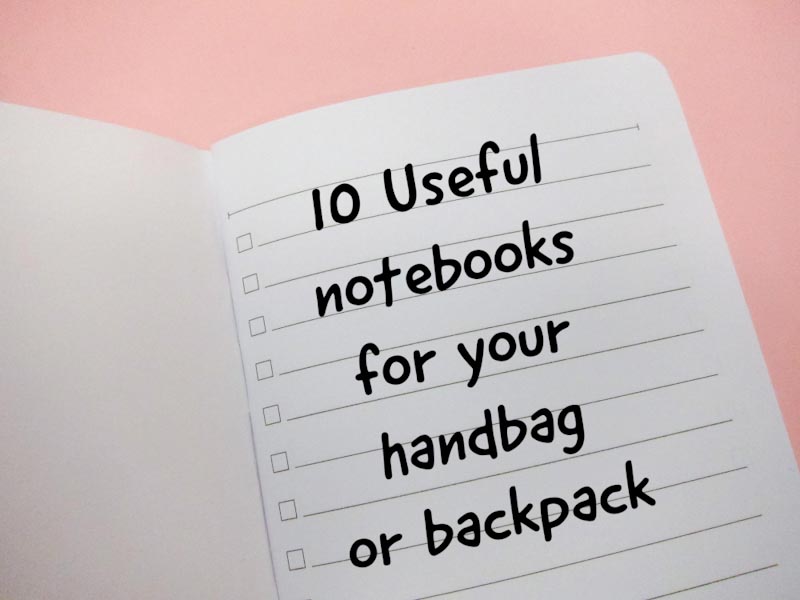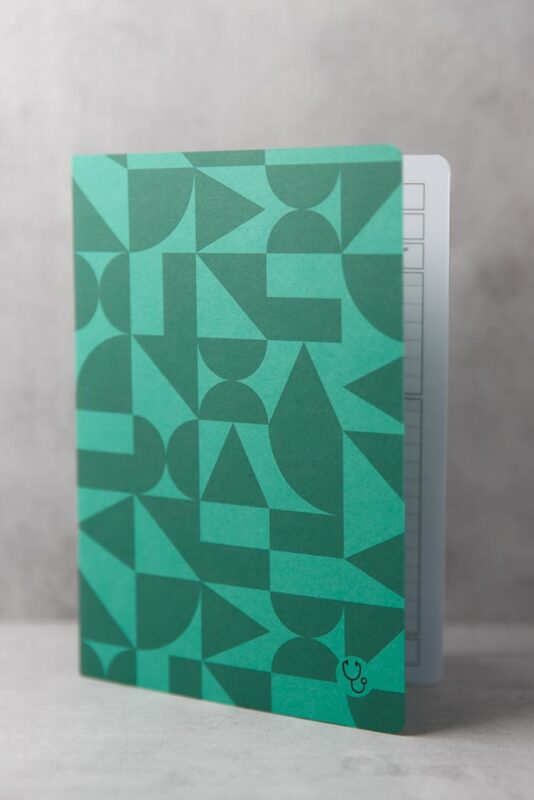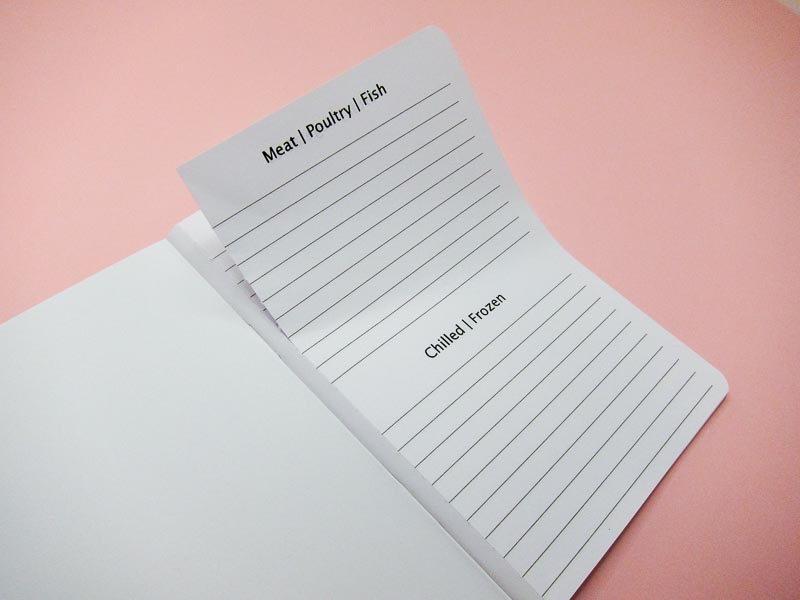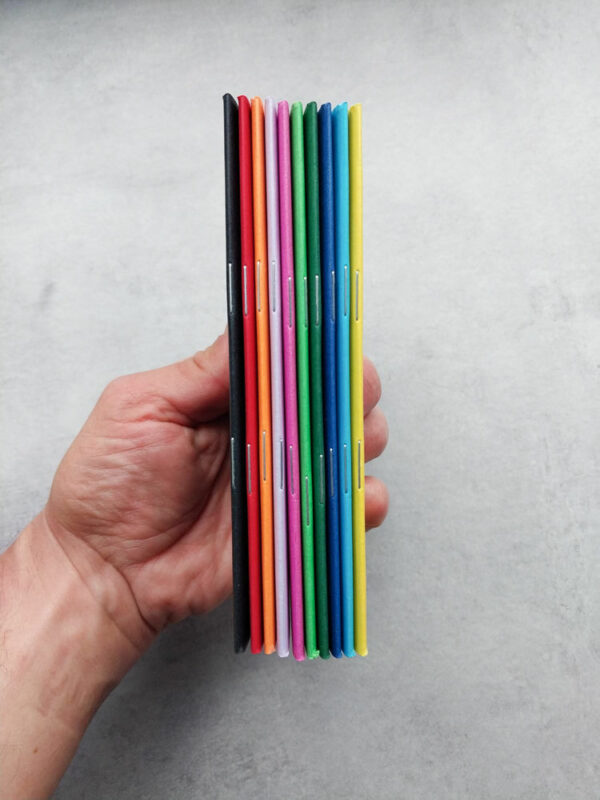Your cart is currently empty!
10 Useful Notebooks for your Handbag or Backpack

Not all handbags can fit a notebook comfortably and with the app on your mobile phone, notebooks seem redundant.
But there are certain sizes and cases where a notebook is handy and more convenient than your smartphone.
Unless you have a big handbag, an A5 size notebook is too large. Personally, I find the field notes / pocket size the most convenient, and the B6 size for when I need to write a lot but still be compact.

Other sizes to consider is the travelers notebook standard size, which is the length of an A5 but half the width, and works well with medium sized handbags.
If you’re looking for something that’s larger than a pocket memo book, then the A6 size notebook is half an A5 and gives you that little more space for writing, but doesn’t take up too much of your handbag.
Notebooks that can fit in a handbag are excellent for one off notes. Especially useful for gathering information because they can have pre printed pages to help you keep track of what to write.
I know you think that your mobile phone can do it all, but there are certain use cases where a notebook in your hand bag will be a better option, and the action of writing something down helps to remember.
These are the 10 notebooks I swap out in my purse depending on the situation I’m going to.
1. Symptom tracker notebook
Symptoms tracker notebook
Having a child or family member that has a chronic illness you know firsthand that there are constant changes, not only in medication but also when symptoms arise. It’s useful to have for when you have to put all this information when it comes up.
Because some symptoms happen when you least expect them, having a notebook in your handbag or backpack allows you to track the symptoms from the beginning rather than having to remember later, where you can often forget. Alternatively, using a scrap of paper or your mobile can also be forgotten.
Ideally you want to track a symptom from beginning to end. A symptom tracker notebook, helps in identifying patterns for new, recurring or ongoing symptoms.
If you see specialists on a regular basis, having a symptom tracker in the form of a notebook, which allows you to simply hand it over to your doctor, will allow consistent transfer of information to your many specialists.
2. Doctor appointment notebook

Doctor Appointment Notebook
This doctor appointment notebook comes as a single or a pack of 3 notebooks and are perfect to manage your health or chronic illness.
The doctor appointment tracker notebook comes in either A5 or B6 size. This makes it convenient to slip into a purse, coat pocket or backpack, while still having enough space for all your important health information.
Keeping a log in a notebook of all the doctor appointments you or family members attend, allows you to have the information in one location, for when it comes time to visit the specialists.
Combining your doctor visit history and a symptom tracker, means you can hand over your symptom tracker to the doctor, while taking notes in your doctor appointment notebook.
Information such as when you saw the doctor last, questions to ask and their answers. Also, adding information for any medication and when you are due to see the doctor next are essential to keep in your doctor appointment book.
Sure, you won’t need to carry this notebook every day, but it’s small enough that when you do it won’t take up much space.
3. Habit tracker notebook
Habit tracking is not about starting a new habit on New Years Day, it’s something that should be done year-round and starting a new habit today is the best time.
Using a notebook that you can carry in your handbag or backpack to track good habits and bad habits, makes you more aware of your habits. Because you are physically writing the results down everyday.
All you need to do is be consistent, and reasonable with your goal.
4. Migraine tracker notebook
Migraines and headaches happen unexpectedly and if there’s something that happens to you on a regular basis, you may have been asked by your doctor to keep track of when you get a migraine.
Using a migraine tracker that you carry with you that has pre define fields for you to quickly fill out, or if you have the strength during an episode is useful.
The information can be reviewed by yourself and the doctor to help workout patterns and things to avoid, so you can try to minimise any migraines or headaches.
Basic information like duration of pain, location and triggers are expected. You may also want to track food & water intake, weather, daily routine and frequency to help with finding a pattern
5. Period tracker notebook
Period tracker notebook
Notebook Size: Pocket
For health reasons some women have to track their menstrual cycle and keeping a pocket-sized period tracker in your purse, means that you can easily document the necessary information while you go about your day.
Having a place to put information about the day your period started, flow, pain and general notes of what happened during the time of the month, is useful for your personal tracking. This can be useful when visiting your doctor/specialist when trying to find the causes for other chronic illnesses as well.
If you have just had your first period. Even though they may not be regular at the moment. A period tracker can help you better understand your cycle.
6. To do list notebook
I love my to-do lists and sometimes when I just don’t want to carry an A5 planner, I much prefer having a pocket size to do list notebook, when running around doing errands.
The one I use has space for 16 to do’s per page. At the top room for the topic or date. The pages in the notebook are perforated, so when I’ve completed my list, I simply tear it out.
The perforated pages also make it easier for me to create and hand out to do’s for family members to action.
7. Expense tracker notebook
If you manage the family budget you know towards the end of the month things can get stressful when you haven’t been tracking the family spending properly.
If you have any unexpected purchases or emergencies come up, knowing how your tracking with your family expenses makes it less stressful and allows you to prioritise for the month
Even though you may be using a credit card for most of your purchases, there will be times where you may use cash, and having a central location where you can track both credit card and cash payments makes it easier at the end of the month when you have to balance the budget.
8. No spend tracker notebook
If you’re trying to save for a holiday or trying to limit your spending, a no spend tracker notebook is a great way to push yourself and keep to the habit of spending less.
There are of course days where you can’t avoid spending money. For the times where you can forgo a coffee at work or that spontaneous purchase online.
Keeping a no spend tracker close by to remind you of the excellent work you are doing encourages you to keep on going to your goal.
9. Shopping list notebook

Shopping List Notebook
These Shopping list notebooks come in a pack of 3 with perforated pages, and enough room for 54 weekly shops. They are perfect to help plan shopping trips for meal prepping.
Meal planning is essential to having a stress free week, and using a shopping list notebook that you can slip into your purse or backpack is great when you go for those after work or on the weekend shopping trips.
This particular notebook has perforated pages, so you can rip it out and hand it over to your spouse or simply make it easier to fold and keep in your pocket while shopping.
Each page has 4 sections that correspond to how your supermarket is laid out. There is space for fruit & vegetables, Chilled / Frozen, miscellaneous items and meat, poultry and fish .
10. Blank notebook

Mini Notebooks 10 pack
A pack of 10 mini notebooks with 20 pages each. Perfect for stocking stuffers. keeping in your purse, to do lists and general notes. 100gsm paper that is super smooth to write on and bright white.
An excellent gift, stocking stuffer, add to a hamper, wedding present, for the handbag, backpack, school, work and home.
My personal preference is a pocket or A6 size notebook. These sizes allow me to carry them in the front pocket of a backpack or in the main compartment of a medium sized handbag.
When the kids are bored or need to pass the time at the doctors, a small notebook is a great way to keep the peace.
They can play tic tac toe, squares, hangman or just draw, to name a few activities.
Also a blank notebook in your handbag is useful if you want to write down some directions, write down a number or even a quick to-do list.
Conclusion
Carrying around a small notebook either in your handbag or pocket of a backpack won’t take up much space.
Swapping out notebooks as needed is a great way to maximise their usefulness, especially if they have custom pages to gather information that is important to you.
You may not use a notebook everyday, but it’s small enough that you can carry it every day, for when you need to.